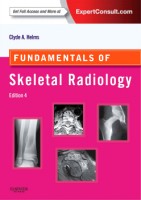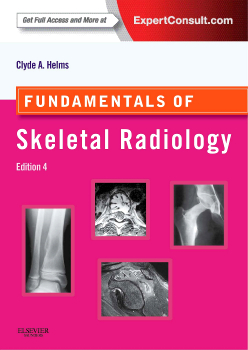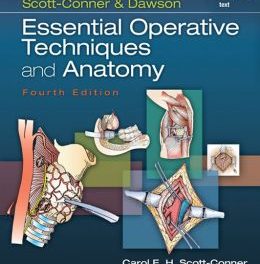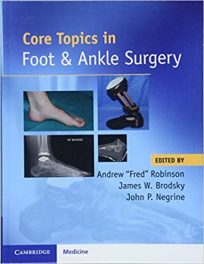 Author: Clyde A. Helms
Author: Clyde A. Helms
Publisher:Elsevier Sunders – 239 pages
Book Review by: Nano Khilnani
The fourth edition of this popular (based on its Amazon ranking) book, also known as “the pink book” is a handy (able to put in your lab coat pocket) and easy-to-use reference guide with hundreds of images for you the radiology student, resident or practitioner.
This book is different from other medical texts in that it is written in an informal and even vernacular style, much like the author himself, who is described by Hideyo Managi, MD – who wrote the Foreword to his book – as “witty, irreverent, unpretentious, and fast-paced.” He promises you that you will find this book “refreshing, eminently readable, and highly informative.” Discover that yourself.
Clyde A. Helms writes in his very short Preface: “This book is irreverent and superficial….it’s meant to be. It’s not meant to be disrespectful to a profession worthy of the highest respect – it’s merely a style of teaching that makes learning easier for many of us. Once the basics of a subject are mastered, one can delve more deeply into a topic…use this book to get started (in bone radiology) and to have some fun while you learn. This book is purposefully short and succinct, which is hard to accomplish with such a weighty topic.”
Here is the material you will find covered in this book, based on names of chapters (which are refreshingly short):
- Unnecessary Examinations
- Benign Lytic Lesions
- Malignant Tumors
- “Don’t Touch” Lesions
- Trauma
- Arthritis
- Metabolic Bone Disease
- Miscellaneous Conditions
- Magnetic Resonance Imaging of the Knee
- Magnetic resonance Imaging of the Shoulder
- Lumbar Spine: Disc Disease and Stenosis
- Magnetic Resonance Imaging of the Foot and Ankle
- Miscellaneous Magnetic Resonance Imaging
The Appendix entitled Differential Diagnoses lists lesions and other conditions and disorders of many varieties, including bubbly or lytic lesions; multiple lytic lesions; lytic epiphyseal lesion; lytic lesion in a patient younger than 30 years of age; dense bones; high-riding shoulder; widened teardrop in the hip: permeative lesion in a child; cortical holes; CPPD-associated disorders; dense base of the skull; geodes; bony sequestrum;
Arthropathy distribution in the hands and wrists; bilateral symmetry of arthropathy; large joint involvement; sacroiliac joint involvement; normal mineralization; hallmarks of degenerative joint disease; joints that exhibit erosions with osteoarthritis; rib lesions; hallmarks of rheumatoid arthritis; and “automatics.”
Among other benefits from using this book, you will be able to:
- Quickly grasp the fundamentals you need to know through an easy-to-understand format and hundreds of images
- Apply the latest knowledge and techniques. Extensive updates equip you with new technology and major advancements as well as an increased emphasis on MR imaging and enhanced coverage of knee imaging
- Address radiation dosage concerns and apply new techniques aimed at early detection
- Access the full text online, including the complete image library and more at www.expertconsult.com
To access the complete contents of this textbook online – which are fully searchable – and to use the other valuable features, simply visit the website indicated below, enter the Activation Code by scratching off the sticker on the inside front cover of this book, and follow the instructions online to activate your access.
If you are already registered, login at www.expertconsult.com, scratch off the Activation Code on the inside front cover of this book, enter it into the Add a Title box, click on Activate Now, and click the title under My Titles.
If you’re a first-time user, click on Register Now, fill in your user information and click Continue, then activate your book by entering your Activation Code into the Enter Activation Code box; then click on Activate Now, and click the title under My Titles.
An additional resource is available to purchasers of this book on www.ClinicalKey.com. Go to the inside back cover of this text, and you will find that ClinicalKey is designed to serve you well by providing you these important core components:
- Comprehensive Content – The most current, evidence-based answers available for every medical and surgical specialty.
- Trusted Answers – Content supplied by Elsevier, the world’s leading provider of health and science information.
- Unrivaled Speed to Answer – Faster, more relevant clinical answers, so you can spend less time searching and more time caring for patients.
Clyde A. Helms, MD is Professor of Radiology and Orthopedic Surgery in the Department of Radiology at Duke University School of Medicine in Durham, North Carolina.







